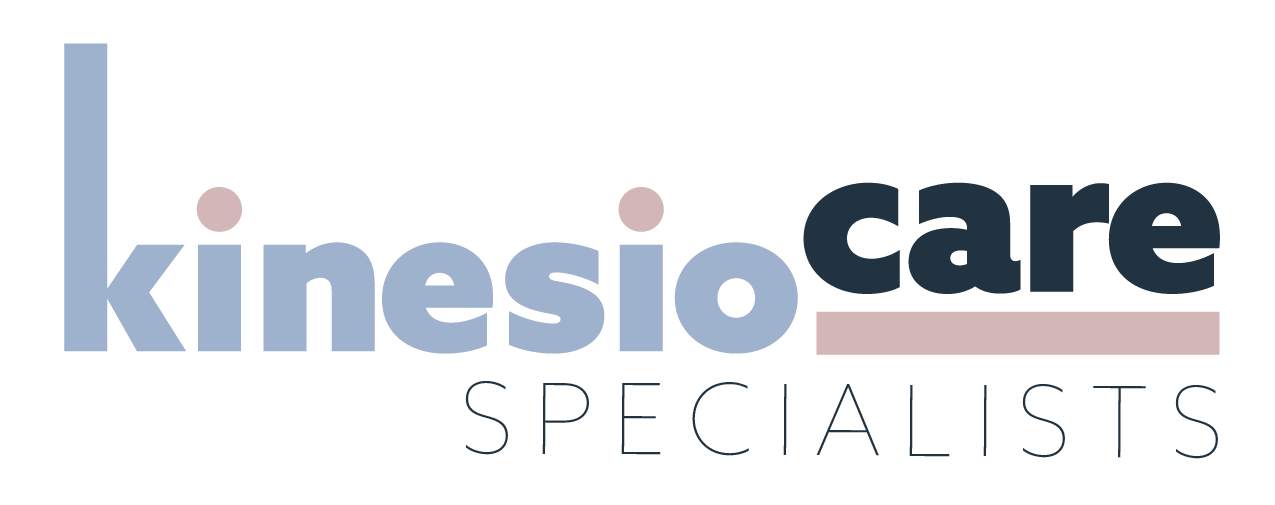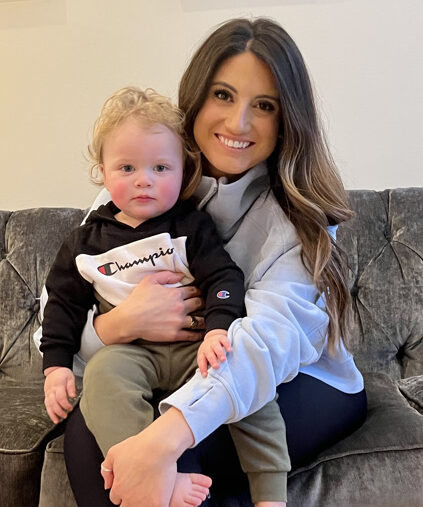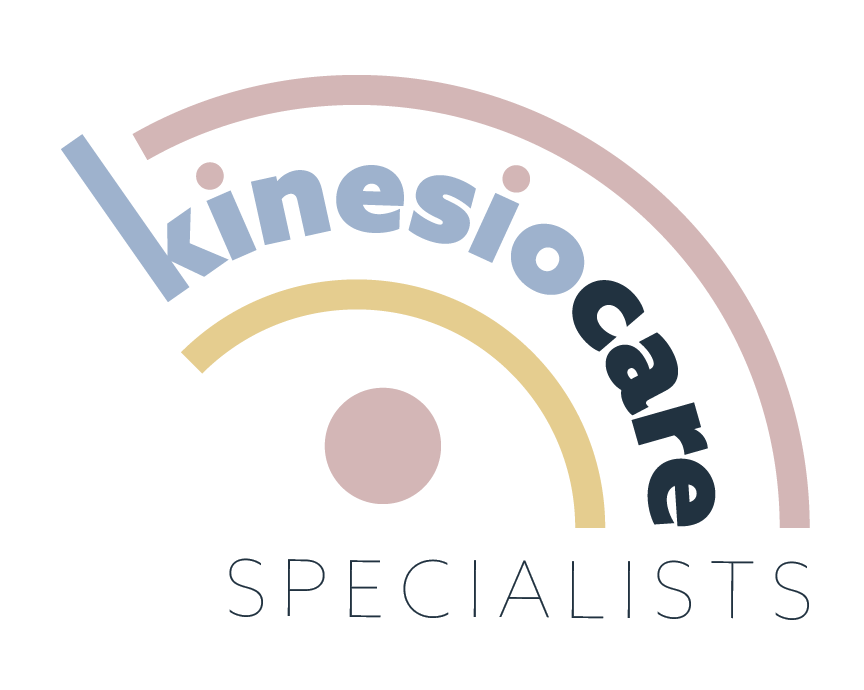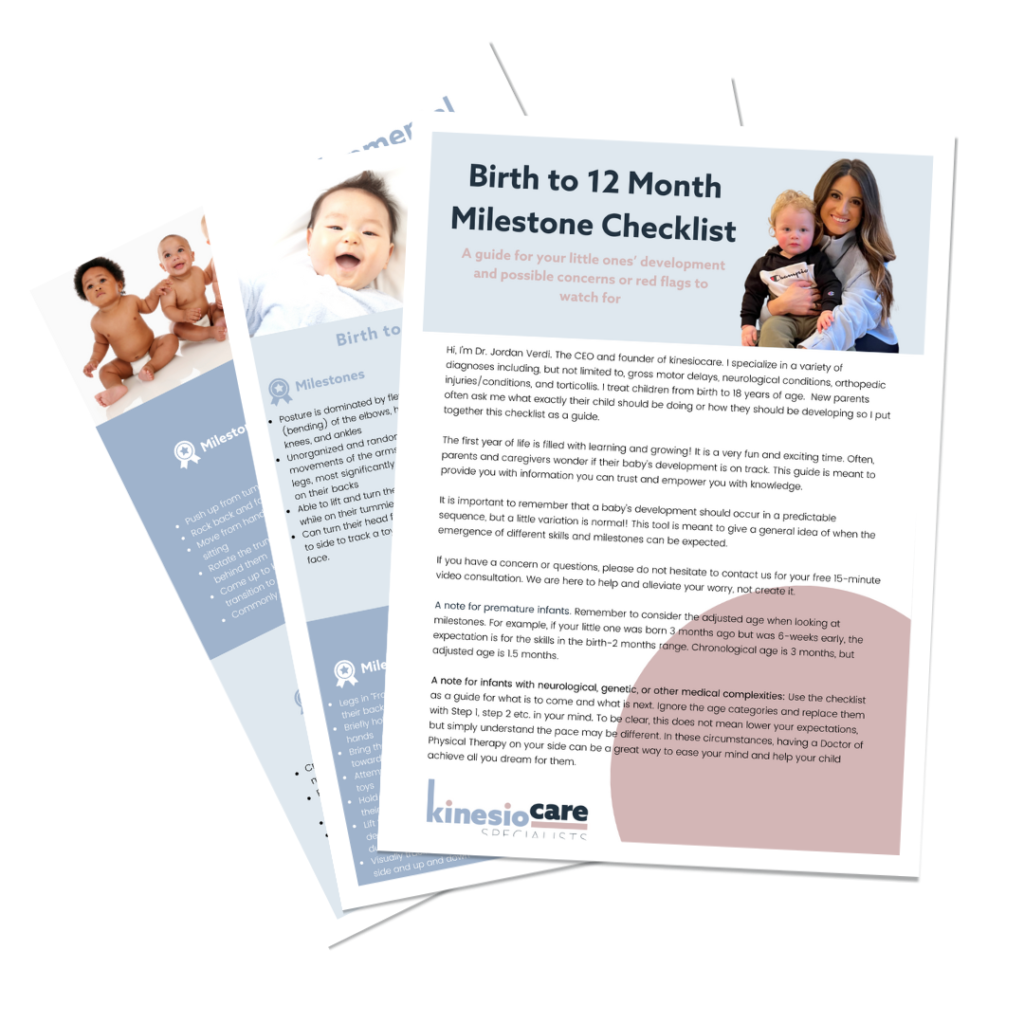Torticollis is tightness in the muscles of the neck. Specifically, the sternocleidomastoid (SCM). This muscle is located on either side of your neck and runs from just behind the ear to the collar bone. Tightness in this muscle results in a head tilt to one side and a preference to look to the opposite side (i.e. left tilt and right rotation or vice versa). The muscle on the side of the tilt is shortened and the muscle on the opposite side is overstretched; both sides now have reduced function.
What to look for:
- preference to look in one direction
- reduced motion to turn head towards one direction vs the other
- high shoulders (the neck isn’t very visible)
- head tilt: the easiest way to observe this is to lay your child on their back. Check to see if the chin is centered with the breastbone, and that neither ear is leaning closer to the shoulder than the other. A head tilt is indicated if one or both of these symptoms are observed.
- flatness on the back of one side of the head
- a crease in the side of the trunk on the same side as the head tilt
What causes torticollis?
- Poor tolerance for tummy time
- Weakness or low muscle tone causing difficulty for a child to turn their head on their own. This can lead to a flat spot on the head, creating even greater difficulty with head rotation.
- Positioning in utero (often common with multiples, or reduced amniotic fluid)
- Prolonged NICU stays or use of ventilator
- Complications during labor and delivery
How does torticollos impact my child’s development?
Put yourself in your baby’s shoes and try this:
- Tilt your head towards one side bringing your ear towards your shoulder. Now try walking around your house. Does it feel different? Is it easier or harder to swallow?
As you know, your baby is constantly learning about their body and the world around them. When your child has these first experiences in an unbalanced and off centered state, seeing only one side of their environment and body, it can skew and slow proper development.
Here’s why…
An infant’s strength develops from the top down, beginning with the neck. Starting off with an asymmetry in the area where our strength first develops can cause a trickle-down effect where we see the same asymmetric pattern develop in the muscles further down the body. This can lead to…
- Reduced attention to one side of the body (may present as not reaching with both arms)
- poor understanding of midline (the center of the body) which can lead to difficulty with sitting, holding their own bottle, etc.)
- difficulties finding their feet while on their back
- this is an important milestone in learning to roll as well as stretching out the muscles on the back of the legs to allow for sitting
- poor body mapping leading to reduced balance and coordination at an older age.
How can physical therapy help?
Physical therapy sessions will focus on relieving your child’s tightness while strengthening the muscles of the trunk and neck to improve your baby’s ability to move its’ head and properly control and use its’ body. Strategies to position or hold your baby will be taught as simple everyday ways to relieve your child’s tightness. Interventions will not only focus on neck stretches and strengthening activities for head control, but will also include tactics for working through milestones from rolling to walking. The help of a physical therapist is valuable for monitoring the ongoing symmetry of your child’s movement patterns and muscles to ensure he or she is developing skills in the appropriate sequence while using the correct muscles.
Here is my number 1 piece of advice: DON’T WAIT!
Better and faster results are achieved with early detection and the need for a helmet may be avoided. If you are unsure or think you may have caught it a bit late, don’t stress! Schedule a free 15-minute video consultation and/or initial assessment and let us provide you with proper guidance.
